Name this molecule
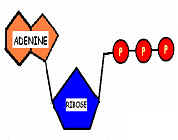
3. Tell what the molecule above does in living things.
Image by Riedell
INTRO TO BIOLOGY Chapters 1
& 2 Practice TEST
Use paper and pencil to answer the ?'s.
You can check your answers at the end.
1. Name the subunit used to make polysaccharides.
| 2. Name this molecule |
 3. Tell what the molecule above does in living things. Image by Riedell |
4. Give the symbol for a sodium ion.
5. Name a particle found inside an atom and give its charge.
6. Give an example of a nucleic acid.
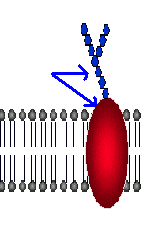 |
7. Name this molecule and tell what it does in cells. |
8. Name a polysaccharide.
9.Tell one way DNA is different from RNA
10.Which polysaccharide is the storage form of glucose in animal cells ?
 |
| 11. Name C in this enzyme catalyzed reaction. |
12. Name a factor that could cause the shape of B (above) to change.
 |
13. Name the vocab word that tells what these cells are doing |
| 14. This green fish is a
______________ autotroph heterotroph |
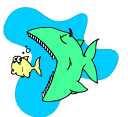 |
| 15. Name this
molecule.
16. Which part of this molecule is hydrophobic? tails head |
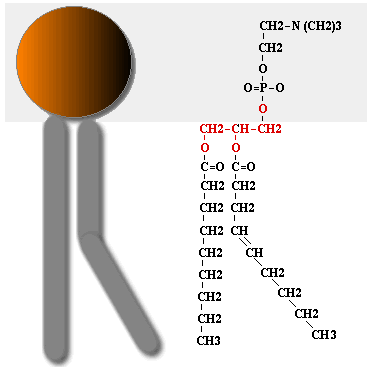 |
| 17. Which monomer would you use to build a protein? | A
|
B
|
C
|
18. Maintaining a constant internal environment is called _______________.
19. Name 5 characteristics of living things.
20. What do we call catalysts that act in living things?
21. Give 2 functions for proteins in cells.
22. The place where the substrate binds an enzyme in an enzyme catalyzed reaction = ______________________
23. __________________ is a type of chemical reaction in which a molecule is broken apart by the addition of the H and OH from a water molecule.
| 24. Which of the 4 macromolecules
you learned about could you build with this subunit?
|
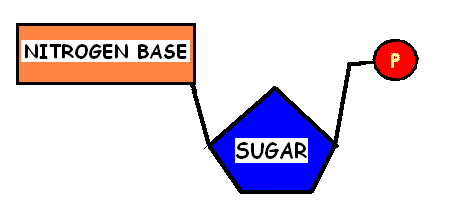
25. If you were building an RNA molecule, name a nitrogen base you could put in the orange box above. |
26. The bird flu virus has been in the news lately. Scientists are worried it may mutate into a new virus that can spread between humans and cause an epidemic. Which characteristic of living things is this an example of?
27. DNA , RNA and proteins could all be called _____________ because they are made by joining similar monomer subunits together to make a larger molecule.
28. Tell the symbol for a HYDROGEN ION.
29. In addition to carbon, hydrogen, and oxygen, what other atom can you find in DNA and RNA?
30. Name the protein hormone that tells animal cells to store glucose as glycogen.
ANSWERS:
1. glucose
2. ATP
3. stores energy in cells
4. Na+
5. proton - postive
neutron - no charge
electron - negative
6. RNA and DNA are nucleic acids
7. glycoprotein; identify "self"
8. glycogen, starch, cellulose
9.
| DNA | RNA |
| double stranded | single stranded |
| nitrogen bases used are A,T,G,C | nitrogen bases
used are A,U,G,C |
| stores genetic info | carries info
from DNA to cell; helps in protein synthesis |
| No Uracil | No Thymine |
| deoxyribose sugar | ribose sugar |
10. glycogen
11. substrate
12. extreme pH or temperature can denature enzymes
13. differentiation
14. heterotroph
15. phospholipid
16. Tails are hydrophobic.
17. B is an amino acid used to make proteins
18. homeostasis
19. Made of cells, reproduce, grow & develop, based on a universal 20. netic
code, obtain and use materials and energy, respond to stimuli from environment,
maintain stable internal environment, change over time as a group
20.enzymes
21. membrane transport; hemoglobin transports oxygen; movement, act as
antibodies, glycoproteins recognize "self"; make cell membranes,
cellulose makes plants sturdy; hormones (insulin controls blood sugar); wrap up
DNA; act as enzymes; THERE ARE HUNDREDS MORE!
22. active site
23. hydrolysis
24. nucleic acids
25. Could use A, C, G, or U NO T in RNA
26. evolution/change over time as a group
27. polymer
28. H+ (Don't forget the + ... its an ion!)
29. Nucleic acids also have Nitrogen (nitrogen bases) and Phosphorus (P).
30. insulin